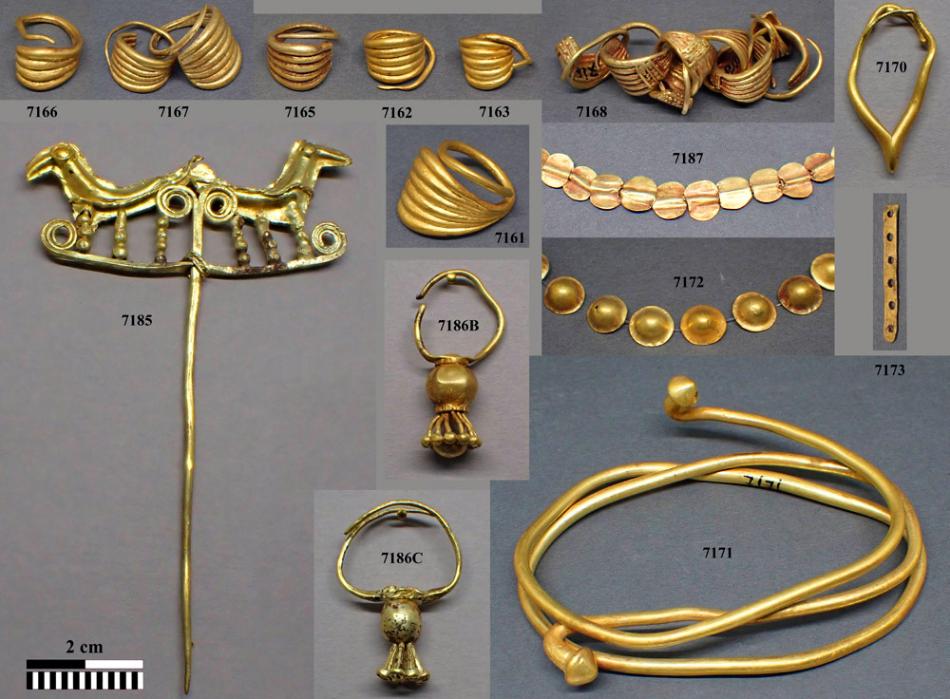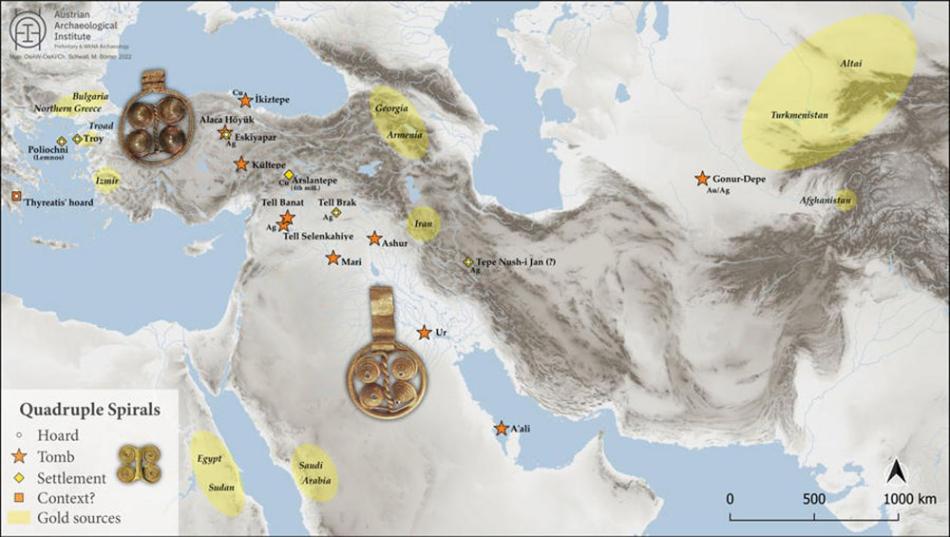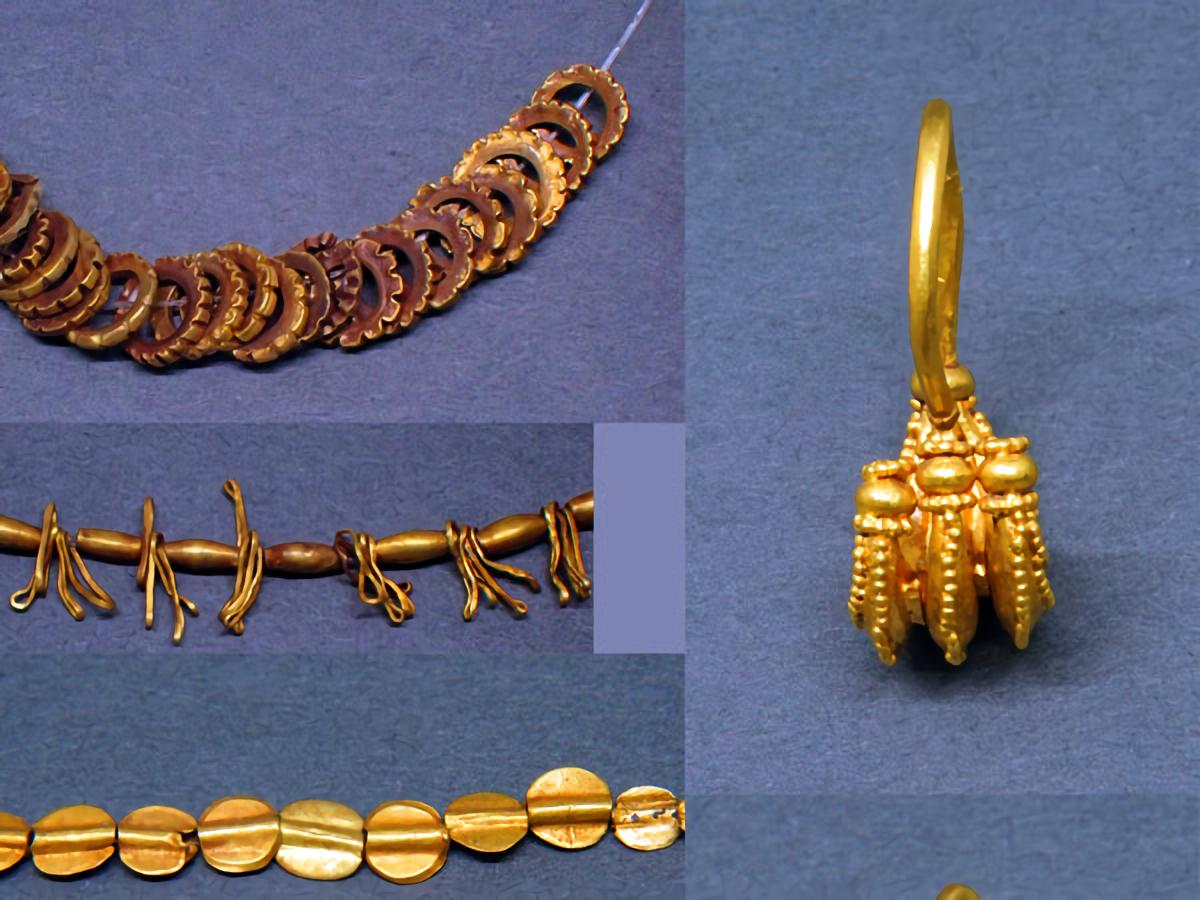There has been a mystery about the origin of the gold for “Priam’s Treasure” for almost 150 years. The first signs have appeared. Scientific tests have shown that the gold jewelry unearthed in Bronze Age Troy is chemically identical to the gold found in the royal tombs of Ur, in Mesopotamia. More than four thousand years ago, this points to extensive trading and transportation of the valuable metal.
While digging in what he believed to be ancient Troy in 1873, archaeologist Heinrich Schliemann discovered more than just city ruins. He also uncovered “Priam’s Treasure,” a trove of gold jewelry, silver cups, and bronze daggers, in one of the archaeological strata. To add to the rarity of the discovery, recent research has shown that the artifact in question does not originate from antiquity but rather the early Bronze Age, some four thousand years ago.
An ancient gold puzzle from the Bronze Age

Researchers say that such large hoards of costly goods are unprecedented in the Aegean and western Anatolia, making the discovery of such an abundance of high-quality gold pieces all the more surprising. It was not only in this one city of the Early Bronze Age that gold and other valuables began to be hoarded; this trend seems to have spread to other urban centers at the same time.
It has been a mystery up until this point where these priceless items originated from, who their owners were, whether or not the jewelry was made locally, and most importantly, where the gold came from. Even Priam’s Treasure, a legendary hoard, is not exempt from this trend. Archaeology and archaeometry have been puzzling about the source of this gold since Schliemann’s day.
Initial samples with a mobile laser
This is because taking the discoveries to the lab and taking samples there would be essential to correctly assessing the gold in these riches. This is due to the fact that, in addition to gold, other metals, including silver, copper, tin, palladium, and platinum, are always present in antique jewelry. According to the researchers, t heir relative abundance in an alloy may provide light on a precious metal’s origin and processing history. Necklaces, pendants, earrings, and other jewelry from Troy are so valuable that they cannot be damaged in transit to or during examination in a lab.
Now, thanks to the work of Moritz Numrich and his team, this issue can be remedied using portable laser ablation equipment, which burns a hole in the pieces right there in the museum without anybody noticing it. Mass spectrometry was then used to determine the elements present in 61 gold artifacts discovered at Troy and the Bronze Age settlement of Poliochne on the Greek island of Lemnos.
This is the same gold that was in Troy and Ur

Shockingly, the gold from Troy (Priam’s Treasure) and Poliochne has the same chemical make-up as artifacts unearthed from the royal tombs of Ur in Mesopotamia, despite the fact that these sites are separated by hundreds of miles of desert. The scientists also discovered that the trace elements in the gold jewelry from the Bronze Age of Georgia were identical to those in the gold from Troy’s Treasure of Priam.
It’s possible that long-distance transit of the precious metal occurred over four thousand years ago. Presumably, these far-flung places maintained commercial ties with one another. This is corroborated by the discovery of Early Bronze Age jewelry with startlingly comparable designs from the Aegean to the Indus Valley in today’s Pakistan, such as earrings with spiral motifs.
Archaeologists argue that the widespread similarity of these pieces of jewelry indicates that not only the precious metal was transported between these far-flung regions during the period, but also the jewelry itself. Jewelers may have moved freely among these Bronze Age countries.
Does Georgia have anything to do with the origin of this gold?
So, what does this imply about the history of the Trojan gold? Gold from the royal tombs of Ur may have been transported to Mesopotamia from western Anatolia, since this region is not known to have any natural gold reserves. As it turns out, there is a shred of evidence suggesting that gold was first discovered in that area. However, Ur has been shown to have established trading relationships with a wide variety of other areas.
Georgia is included in this. Bronze Age gold from Georgia exhibits the most similarity to gold from Troy’s Treasure of Priam, Poliochne, and Ur in terms of the quantity of trace elements. This idea is, however, still unproven due to a lack of regional data and further inquiry into other things.
The gold from Troy’s Treasure of Priam and Ur, however, very certainly did not come from Bronze Age mines. In contrast, the high levels of tin, palladium, and platinum in the gold jewelry indicate that the precious metal was likely originally gold dust washed from a river. The subject of the river’s precise location, however, remains unanswered.


